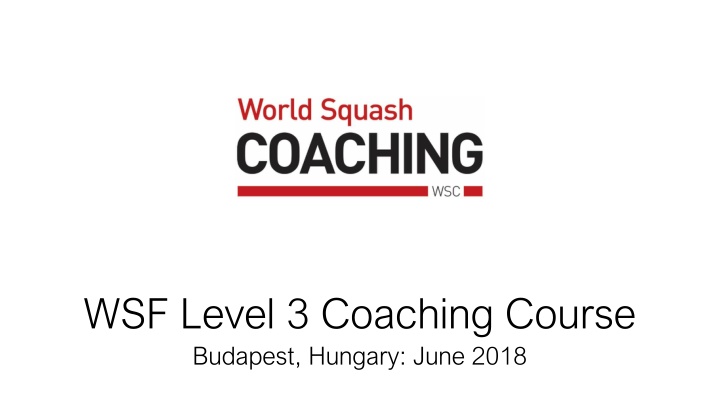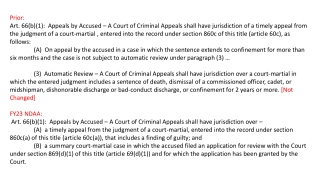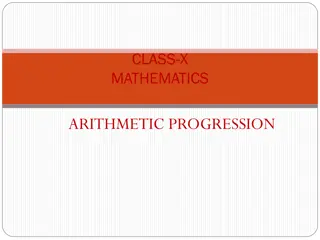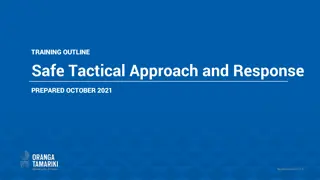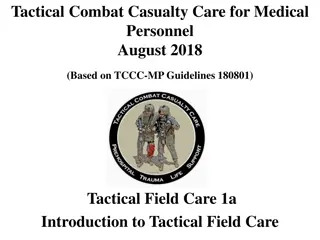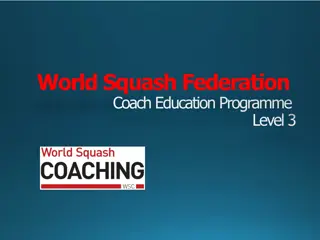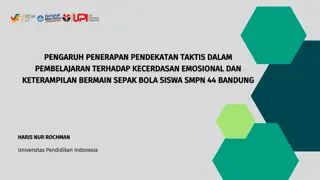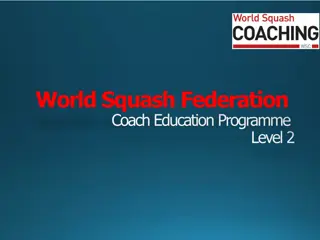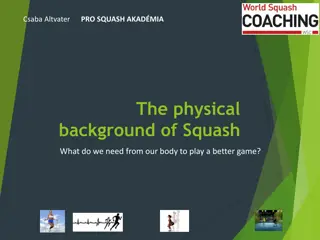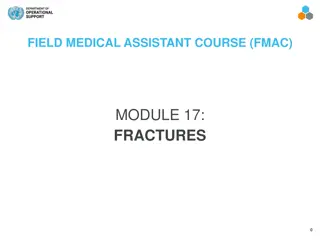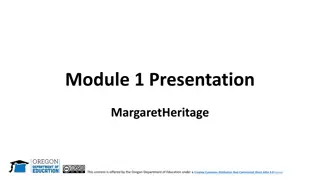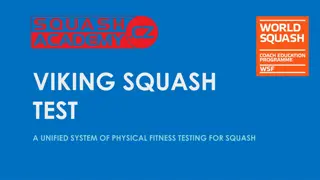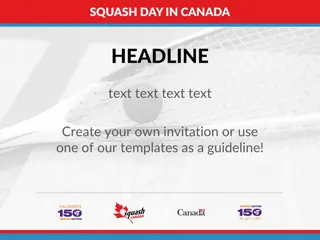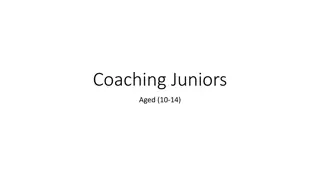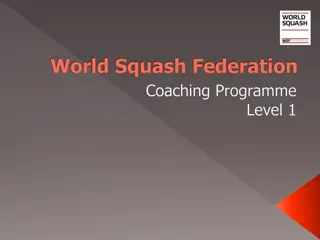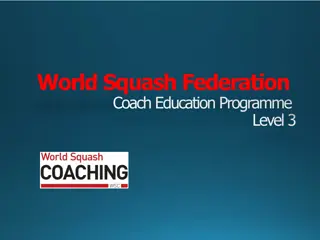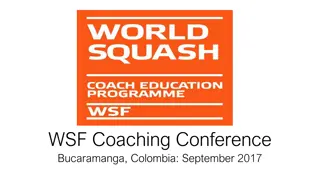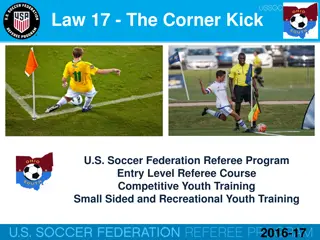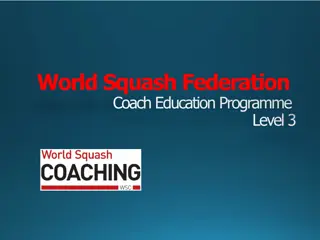Enhancing Squash Skills: Tactical Progressions & Corner Court System
Discover the importance of tactical progressions and the corner court system in squash coaching. Learn how structured practice can improve anticipation, perception, and decision-making skills. Find out about traffic lights zones and how they affect gameplay. Explore the corner court system for setting clear targets and enhancing shot accuracy.
Download Presentation

Please find below an Image/Link to download the presentation.
The content on the website is provided AS IS for your information and personal use only. It may not be sold, licensed, or shared on other websites without obtaining consent from the author.If you encounter any issues during the download, it is possible that the publisher has removed the file from their server.
You are allowed to download the files provided on this website for personal or commercial use, subject to the condition that they are used lawfully. All files are the property of their respective owners.
The content on the website is provided AS IS for your information and personal use only. It may not be sold, licensed, or shared on other websites without obtaining consent from the author.
E N D
Presentation Transcript
WSF Level 3 Coaching Course Budapest, Hungary: June 2018
Tactical Progressions Using Traffic Lights & Corner Court System Colin White September 2017
Background: Why Important To Me What: I was a limited player, who could be difficult to beat, especially the first time I played someone. Why: My game was built around the action of getting the ball deep and tight, then using my fitness to outlast my opponent. When:Creating the opportunity was not my problem, but having the software to recognize the tactical advantage of WHEN and WHERE I needed to apply the next level of pressure. How:I lived in the land of closed skills , basically we played (too much stimulus) or drills with very little perception and decision-making. Always wondered what a better player saw, that I didn t ?
What Are Tactical Progressions? What: A process of structured practice, designed to support the game based learning and focuses the Player on the intention to create a tactical advantage. Why: It enhances the anticipation/perception/decision process, providing the Player with additional time. When: It needs to become an integral part of the learning process of Coaching- Practice-Games on a regular basis, to ensure learning is taking place for a match situation. How: By creating a progressive structure of games that enhances the learning process. It works by dividing the front wall into specific heights for the Player to focus on overall accuracy.
What Are Traffic Lights? Red Zone: More Height and Depth = More time to recover to the T-zone. Yellow Zone: Less Height and Depth than Red, but more Power = Less time and more pressure on the opponent. Green Zone: Less Height and Depth than Yellow, but more Power = Less time and additional pressure on the opponent. Green Zone would also include shots like Drop and straight Kill. Note: When hitting to a length, one of the main objectives of each zone is where the second bounce takes place.
What Is The Corner Court System? What: By breaking up the floor, into corner sections, we can set the Player clear targets to help the development of Linking Action to Result. Targets on the floor also helps us teach angles and weight of shot. Why: When trying to throw something with precision, we need to set clear targets. This would help with accuracy and allow for instant feedback and adjustments. When: The principal of hitting a ball with a clear target/aim should be done for every shot! How: Using the Short Line as the middle line and the Half Court Line to run up through the middle, we break the court into 4 Corners. We can put tape down to clearly mark the sections.
What Is The Corner Court System? C1 C2 C4 C3
Questions to ask that could help the process, but not limited to: 1 (Internal Q&A Focus?) What do I want my player to do? Why do I want them to do it? When should they do it? How do you produce it and what are the targets? What are the benefits/negatives to hitting each zone? What are they trying to achieve?
Questions to ask that could help the process, but not limited to: 2 (External Q&A Focus?) What does it look like when you force/allow your opponent to hit a certain zone? Does this help Anticipation and Deception? What influences the shot I will hit and where I will choose to have my point of impact? When and Why do we play a certain shot? When and How do we add Deception?
Tactical Progression 1-3 1. Whole Court Game at match speed, to 5 Points. Using our Coaches Eye, what do we see? What is our Area of Focus and do we need to get our players to buy in and either dial up their intensity or focus? What will be our intention? 2. Above or Behind: Use the Service Line & Short Line as the targets to Link Action To Result. At match speed, game based. Based on our open assessment and if any prior knowledge of the players, we start to explore what our Intention will be. (GP 2) 3. Introduce the Traffic Lights, serving from the left, have both players hit to C3 in a two bounce length game, but they must use a different light every time. My Intention, is to help guide my players to explore the tactical benefits of varying the pace. With the intent to create the opportunity to apply pressure. With the stimulus and noise dialed down, can our players not only create the opportunity, but recognize when they have?
Tactical Progression 4-7 4. Traffic Lights into C3 when you are behind your opponent, but you MUST take it short into C1, when you are in front of your opponent. By opening the constraint, we encourage our player to explore when they have gained a tactical advantage and act upon it. (What about the grey area when opponent is around equal with you?) 5. Traffic Lights into C3 when you are behind your opponent, the OPTION to take it short into C1, when you are in front of your opponent. ONE EXTRA C1 OPTION from the first shot into C1. Does our player create the tactical advantage, if yes, do they explore the right time to apply pressure? 6. Serving from the left, with the return of serve coming into C3, a game is played in C1 & C3. The ball will be good if 1st or 2nd bounce would be in C1 or C3. My Intention is to lift some of the constraints and let the individual explore the best solutions for themselves to use the traffic lights to vary the pace and create the opportunity to apply pressure. (GP 4) 7. Whole Court Game at Match Speed, with double points for a winning combination of hitting C3 then C1. The skill of the Coach is to make sure the Intention has not been lost in the lifting of the constraints.
Practical Session We will break you into groups, with one of you being Lead Coach for each group. Using the Traffic Lights and Corner Court System, discuss and plan a session, then deliver it, for two players on court. Coach the Intention of: Volley into Space. Debrief with a Tutor. Change the Lead Coach then discuss and plan a session for the same two players, but you will set the intention. Depending on time this will be delivered on court. Q&A back in the room.
Conclusions: A. Did we work with the Four Guiding Principals? 1. Game Based. 2. Coach the Intention. 3. Sub-conscious Learning. 4. Sally Sunflower. Encourage the individual to explore and find the options they create. B. What is our objective with this Tool? To help develop more skillful players, with a more well balanced Spider s Web. Players who are: C.A.R.D.S. Creative (Bend the rules!) Awareness Resilient Decision Makers Self Organizing (on and off court) C. For me, the Tool of Traffic Lights, with the Corner Court System is a very good application that can help our players be more skillful in using the Spider s Web (PDA). It can and should be used at all levels, but the skill of the Coach is to adapt to the Intention of that session, to help the Guided Discovery of their players.
